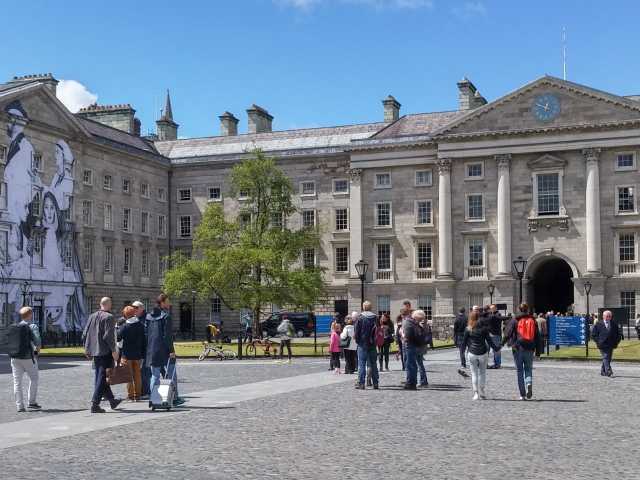The Great Regional Awakening: New directions
| Date: | 12 September 2017 |
| Author: | L.G. Horlings |

From 4-7 June the yearly annual conference of the Regional Studies Association took place entitled 'The Great Regional Awakening'. The location, Trinity College is an historical location in the heart of Dublin. Hereby a summary of some interesting key-notes.
Urban complexity and economic development
Prof. Ricardo Hausman (Harvard University) explained why some communities, places and countries perform better economically then others although they might have the same institutional and cultural characteristics. Communities can be characterized by complexity, connectedness and market size. He showed a global map of economic complexity, arguing that more complex communities and places perform better in term of development. Specialization and diversification are strategies that support development, and which are two sides of the same coin, according to Hausman. Products differ in the set of capabilities they require. These capabilities include forms of embedded knowledge, codified knowledge and the know-how of specialists. Development is dependent of how many products you can make and how difficult it is to make these. Economic complexity thus means a diversity in know-how which can support development.
How to increase the diversity of know-how? Mobility plays a role but also product space: are you able to ‘jump from one product to another’? He explained this by referring to an open forest where monkeys can easily jump from one tree to another. Diversification is thus supported when a community is open, not isolated.
Another condition for development is the availability of bits of know-how which can be combined. Think as a metaphor of the game scrabble: if you have more letters, you can make more words (read: products) and longer words. He distinguished four strategic settings based on the level of complexity and the extent to which it is ‘easy to jump’ to new product: 1) Stairway to heaven 2) Let it be 3) Bridge over troubled water and 4) Hey Jude: make it better. He concluded that we need institutions that are embedded and open up information and that policies should engage with industries.
How to make cities work for all
Joaquim Oliveira Martins from the OECD discussed the OECD’s recent report “How to make cities work for all”. Only 20% of the metropolitan areas with at least a half million inhabitants have grown inclusively. Inequalities within cities go beyond income. City data on well-being dimensions can help multi-dimensional integrated policies. Inequality within cities often means spatial segregation. Overly restrictive land-use policies can harm inclusiveness via rising housing costs. He argued that place-based policies help to introduce a system approach to inclusive growth and a more integrated structural policy package.

